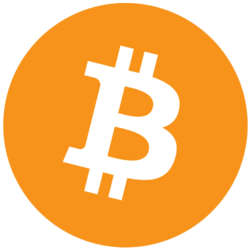Coin Launch Space is here to give you clear, accurate, and trustworthy information about crypto. Our team is made up of experts with real experience in crypto, finance, and new tech. Every article and page we publish is carefully reviewed by skilled editors to make sure it’s up to our high standards. We take pride in offering honest, easy-to-understand reviews based on real knowledge. Check out our editorial policy and see how we test and review crypto assets.
Imagine holding a digital treasure in your hands—a currency born from the hum of your smartphone, mined with a tap, and now poised to transform into cold, hard cash. That’s the story of Pi Coin, a cryptocurrency that’s been simmering in the blockchain cauldron since 2019, crafted by Stanford minds with a vision to democratize mining. For years, it lingered in the shadows of an enclosed network, a promise whispered among millions of users patiently pressing that lightning bolt icon. But as of February 20, 2025, the Pi Network’s mainnet burst onto the open stage, and with it, the gates to trading flung wide. Suddenly, the question on everyone’s lips isn’t “Can I sell Pi Coin?” but “How do I turn this digital dream into dollars?”
I’ve spent years unraveling the threads of blockchain’s tapestry, watching projects rise and fall like tides. Pi Coin captivated me early on—not just for its accessibility, but for the sheer curiosity it sparked: Could a mobile-mined coin really carve a place in the crypto pantheon? Now, with the mainnet live and exchanges like Bitget, OKX, and MEXC listing Pi, the moment of truth has arrived. If you’re one of the 65 million active pioneers clutching your stash, wondering how to cash out, you’re in the right place. This guide isn’t just a map; it’s a companion for navigating the winding path from your Pi wallet to your bank account. Let’s dive in.
The Dawn of Pi Coin’s Open Mainnet
Before we get to the “how,” let’s pause to appreciate the “why now.” Pi Network, launched by Stanford alumni Nicolas Kokkalis and Chengdiao Fan, aimed to strip away the barriers of traditional crypto mining—no energy-guzzling rigs, no tech wizardry required. Instead, it invited anyone with a smartphone to join the dance, building a community of over 100 million registered users by 2025. For years, those coins sat locked in an enclosed mainnet, a sandbox for testing and dreaming. But on February 20, 2025, the firewall fell, and Pi stepped into the spotlight, tradable at last.
The launch wasn’t flawless—early traffic overwhelmed the Pi Wallet, briefly stalling transfers—but the market responded with a roar. Prices soared past $92 in the announcement’s wake, then settled into a volatile dance as exchanges opened their doors. Today, as I write on March 1, 2025, Pi Coin trades at a fluctuating value, with platforms like CoinGecko tracking its real-time pulse. This is your moment. Whether you’re looking to cash out entirely or test the waters, the process begins with understanding your options.
Step 1: Verify Your Pi Holdings
First things first: you can’t sell what you can’t access. If you’ve been mining Pi for years, your coins likely sit in the Pi Network app, but not all of them are ready to move. The mainnet transition required two key steps: KYC (Know Your Customer) verification and migration to the open mainnet. If you haven’t completed these, you’re still in the enclosed zone, and your Pi remains untouchable for now.
Open the Pi Network app on your phone. Head to the “Profile” section and check the KYC status. If it’s pending, submit your ID and selfie as prompted—approval can take days, so patience is key. Once verified, ensure your coins have migrated to the mainnet. In the app, your wallet should show an “available balance” rather than a “testnet” or “locked” label. This is your green light. For a detailed walkthrough, CCN’s guide offers a solid primer on this prep work.
Step 2: Choose Your Selling Platform
With your Pi ready to roll, the next decision is where to sell it. The open mainnet ushered Pi onto a dozen exchanges by February 2025, each with its own flavor. Centralized exchanges (CEXs) like Bitget, OKX, and HTX dominate the scene, offering user-friendly interfaces and high liquidity. Decentralized exchanges (DEXs) like PancakeSwap might list Pi later, but for now, CEXs are your safest bet for cashing out.
Bitget stands out for its sleek design and beginner-friendly tools. OKX, with its robust reputation, caps orders at $10,000 to prevent dumps, ensuring stability. MEXC, meanwhile, caters to risk-takers with competitive fees. If you’re in the U.S., Pionex US already lists Pi, while Binance US might follow soon—keep an eye on BitDegree’s updates for the latest. Pick a platform that aligns with your comfort level and regional access, then sign up and complete their verification process.
Step 3: Transfer Your Pi to the Exchange
Now, let’s move those coins. Open the Pi Browser on your device—it’s the gateway to your wallet. Unlock it with your passphrase, then select “Pay / Request.” You’ll need a destination, so switch to your chosen exchange. On Bitget, for instance, head to “Assets,” click “Deposit Crypto,” search for Pi, and copy the unique deposit address (it starts with “M”). Paste this into your Pi Wallet, double-check it—blockchain transfers are irreversible—then input the amount you want to send and hit “Send.”
The transfer might take minutes or hours, depending on network traffic. Once it lands, you’ll see your Pi reflected in your exchange wallet. Bitget’s tutorial walks you through this with screenshots if you need a visual nudge. This step feels like mailing a letter—once it’s gone, it’s out of your hands, so precision matters.
Step 4: Sell Your Pi Coin
Here’s where the rubber meets the road. On your exchange, navigate to the “Trade” or “Spot Trading” section. Look for the PI/USDT pair—USDT (Tether) is a stablecoin pegged to the dollar, making it a common bridge to cash. You’ve got two options: a market order, which sells instantly at the current price, or a limit order, where you set your desired price and wait for a match.
Market orders are quick and simple—perfect if you’re eager to cash out amid Pi’s post-launch volatility. Limit orders give you control, letting you ride the waves for a better rate. Check the live price on CoinMarketCap to gauge the market—say it’s $2.15 today. Enter your amount, confirm, and watch the USDT roll in. BeInCrypto’s guide breaks this down with real-world examples.
Step 5: Convert to Cash and Withdraw
You’ve sold your Pi for USDT—now what? To get cash, you’ll need to convert that USDT into fiat currency like USD. Most exchanges offer a P2P (peer-to-peer) trading option. On Bitget, go to “P2P Trading,” select “Sell USDT,” and choose a buyer offering bank transfer or PayPal. Agree on terms, send the USDT, and wait for their payment—always verify before releasing funds.
Alternatively, trade USDT for Bitcoin or Ethereum, then withdraw to an external wallet like Trust Wallet for later use. If your exchange supports direct fiat withdrawal (like OKX), convert USDT to USD and link your bank account. Withdrawal times vary—P2P can be instant, bank transfers might take days. Fees apply, so check OKX’s fee schedule or your platform’s fine print.
Alternative Path: Peer-to-Peer Trading
Not keen on exchanges? You can sell Pi directly to another person via P2P. Join Pi Network communities on Telegram or Reddit—places buzzing with buyers and sellers. Post your offer, negotiate a price (maybe $2 per Pi), and settle on payment (cash, PayPal, crypto). Use the Pi app to send coins to their wallet address once payment clears.
This method skips middlemen but demands trust. Meet in person for cash deals if possible—banks or public spots add safety. Online, stick to reputable buyers with community cred. It’s raw and flexible, echoing Bitcoin’s early days, but caution is your shield. SwapSpace’s blog dives deeper into P2P nuances.
Timing Your Sale: Strategy Matters
Selling Pi isn’t just mechanics—it’s timing. The mainnet launch sparked a frenzy, with prices spiking then dipping as supply hit the market. By March 2025, analysts on Webopedia predict fluctuations between $1.19 and $10.28 through the year, driven by adoption and hype. Sell now for quick liquidity, or hold if you believe Pi’s ecosystem—think DeFi, gaming, or its Map of Pi merchant network—will boost value.
Watch charts on CoinGecko, compare exchange rates, and avoid panic moves. I’ve seen holders cash out at peaks only to regret it when prices climbed higher—patience can pay. Conversely, selling in batches hedges against drops. It’s your call, but knowledge is your edge.
Safety First: Avoiding Scams
The crypto world glitters, but shadows lurk. Scammers prey on Pi’s buzz—fake apps, phishing links, or “too-good-to-be-true” buyers. Stick to official channels: the Pi Network app, verified exchanges, known communities. Never share your passphrase—ever. For P2P, vet buyers via reviews or escrow services. FnFSwap’s guide flags red flags like odd apps or inflated rates.
If a deal smells off, walk away. Your Pi’s worth protecting—it’s the fruit of years of taps. Use two-factor authentication on exchanges, and consider a hardware wallet for leftovers. Safety isn’t sexy, but it’s smart.
Tax Implications: The Fine Print
Cashing out Pi isn’t free of strings—taxes loom. In the U.S., selling crypto is a taxable event, treated as capital gains. Short-term (held under a year) gains match your income tax rate; long-term (over a year) top out at 20%. Log your mining date, sale price, and proceeds—tools like CoinTracker help. Outside the U.S., rules vary—check local laws or CCN’s tax notes.
Ignoring this can bite later, so plan ahead. A tax pro can clarify, especially with Pi’s unique mining origin. It’s not just profit—it’s compliance.
The Bigger Picture: Pi’s Potential
Pi Coin isn’t just a transaction—it’s a story. With 100 billion coins capped and a growing ecosystem, it’s eyeing a spot beside giants like Bitcoin. Its mobile-first ethos could spark mass adoption, especially in regions hungry for financial tools. Yet skeptics linger, whispering “pyramid scheme” or “hype bubble.” The truth? Time will tell.
selling your Pi today might fund a dream—or regret a missed moonshot. I’ve watched blockchain evolve from a niche to a force; Pi’s chapter is just beginning. Will it redefine money, or fade like forgotten altcoins? That’s the thrill of the game.
Your Next Move
So, here you stand, Pi in hand, options aplenty. Transfer it, trade it, cash it out—or hold tight and watch. This guide’s your lantern, illuminating the path from wallet to wealth. Start with KYC, pick your platform, and move with purpose. The process is straightforward, the stakes personal.
Years ago, I mined my first Pi, half-curious, half-skeptical. Now, as I type, I marvel at its journey—and yours. What will you do with your slice of this digital pie? The market’s alive, the clock’s ticking. Let’s make it happen.
Disclaimer: The content provided reflects the authors personal opinions and is influenced by current market conditions. Conduct thorough research before making any cryptocurrency investments. The author and the publication are not liable for any financial losses you may incur.























